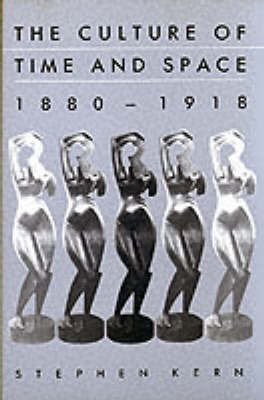THIS EDITION HAS BEEN REPLACED BY A NEWER EDITION From about 1880 to World War I, sweeping changes in technology and culture created new modes of understanding and experiencing time and space. Stephen Kern writes about the onrush of technics that reshaped life concretely--telephone, electric lighting, steamship, skyscraper, bicycle, cinema, plane, x-ray, machine gun-and the cultural innovations that shattered older forms of art and thought--the stream-of-consciousness novel, psychoanalysis, Cubism, simultaneous poetry, relativity, and the introduction of world standard time. Kern interprets this generation's revolutionized sense of past, present, and future, and of form, distance, and direction. This overview includes such figures as Proust Joyce, Mann, Wells, Gertrude Stein, Strindberg, Freud, Husserl, Apollinaire, Conrad, Picasso, and Einstein, as well as diverse sources of popular culture drawn from journals, newspapers, and magazines. It also treats new developments in personal and social relations including scientific management, assembly lines, urbanism, imperialism, and trench warfare. While exploring transformed spatial-temporal dimensions, the book focuses on the way new sensibilities subverted traditional values. Kern identifies a broad leveling of cultural hierarchies such as the Cubist breakdown of the conventional distinction between the prominent subject and the framing background, and he argues that these levelings parallel the challenge to aristocratic society, the rise of democracy, and the death of God. This entire reworking of time and space is shown finally to have influenced the conduct of diplomacy during the crisis of July 1914 and to havestructured the Cubist war that followed.
- ISBN10 0674179730
- ISBN13 9780674179738
- Publish Date 1 January 1983
- Publish Status Out of Print
- Out of Print 8 October 2008
- Publish Country US
- Imprint Harvard University Press
- Edition New edition
- Format Paperback
- Pages 384
- Language English
